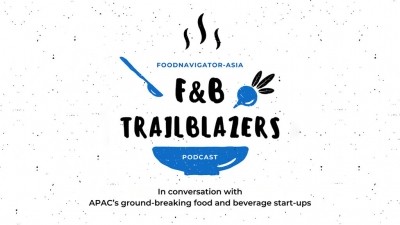Trend Tracker: Mondelez snack trends, Coca-Cola sustainability trends, Middle East fat reduction and more feature in our round-up

Generation gap: Mondelez highlights differing snack preferences between age groups in Australia
Mondelez Australia has revealed widely differing factors driving snack choice between different generations in Australia, although convenience and quality still stand out as major reasons for snacking across all age groups.
According to the firm’s recently-released State of Snacking report, snacking is a rapidly growing industry worldwide with some 60% of adults overall, and 70% of millennials in particular, expressing a preference for ‘many small meals’ as opposed to ‘a few large meals’ in a day.
Australians were revealed to snack significantly earlier in the day than snackers from the United States and United Kingdom, but later than consumers in China, India and Canada.
“What the research shows is that mid-afternoon is the peak time for Aussies [2.41pm] to enjoy a snack, which suggests we’re looking for that pick-me-up to get us through the day,” Mondelez Australia Managing Director Nigel Parsons said to FoodNavigator-Asia.
Clean label cocoa butter replacer seeks to tap on fat reduction trend in Middle East
Bunge Loders Croklaan has launched its clean label and ‘healthier’ version of cocoa butter replacer for the confectionery industry, in an attempt to capitalise on demand for more healthy options in the Middle East.
The product, Couva 806NH claims to contain low trans-fat levels (<1%), reduced level of saturated fat, is non-hydrogenated, and non-tempering.
As a non-tempering coating fat, it provides more coating flexibility with reduced cracks, making it suitable for coating and enrobing in bakery and confectionery.
According to the firm’s application and technical sales director, Balachandar Selvamohan, the process involved a lipid modification technology, “which doesn’t use the traditional hydrogenation process method so the fat is clean label and it doesn’t contain any trans-fat in it.”
The R&D process took more than six months, which the firm admitted the biggest challenges were in combining both nutrition and functionality.
No green bottles for Sprite anymore: Coca-Cola seeks to increase PET recyclability in SEA
Coca-Cola has opted to increase the recyclability of its Sprite bottles in the South East Asian region by converting all new bottles from green to clear.
The firm says this is line with its objectives of increasing PET plastic use in a sustainable manner.
Since Sprite was first launched in the ASEAN region in Philippines back in 1968, it has been retailed in green-coloured bottles, even when sold in its classic glass packaging.
At the recent United Nations environmental programme SEA of Solutions in Bangkok, Coca-Cola emphasised its commitment to recyclability and particularly its interest in highlighting PET as a ‘sustainable solution’.
“A PET bottle actually has a significantly lower carbon footprint than the equivalent amount of aluminium and glass, which gets reduced even further when recycled content is included. A recycled PET bottle has even less of a carbon footprint,”Coca-Cola Asia Pacific Leads for Communications, Sustainability and Public Affairs Matt Echols told FoodNavigator-Asia.
“So, for the beverage sector, it’s important that we work to get to a closed-loop circular economy especially for high-value, 100% recyclable plastics like PET.”
Fishcoin initiative aims to solve traceability challenges in first mile for sustainable seafood production
Singapore-based Eachmile Technologies has developed Fishcoin, a blockchain-based traceability system that it believes can increase the stability and security of the seafood industry.
Asia accounts for 90% of the global production of seafood, with most harvested in developing nations by small scale fishers and farmers. Yet, of all the wild fish catch, more than 30% are said to be caught by illegal, unreported or unregulated (IUU) fishers.
While some buyers and retailers are already tracing their products, the firm thinks the start of the supply chain is lacking in this area.
Alistair Douglas, CEO and partner at Eachmile Technologies (The Fishcoin Project) told FoodNavigator-Asia: “Most of our supply chains distributing food and commodities start in these developing nations so it is critical we find a way to identify, verify and reward producers for sharing their data and for producing food and commodities responsibly.”
‘Clarity is key’: Low and no sugar claims in the spotlight as South Korea tightens regulations
The South Korean Ministry of Food and Drug Safety (MFDS) has announced tightened food labelling and advertisement standards in a move to strengthen the country’s Food Labelling and Advertising Act, with sugar and other ‘negative content’ claims receiving much focus.
The new regulations were announced via a formal notice on the MFDS website, and was officiated by an MFDS Director who was not named.
“[This notice serves as the] Enforcement Decree of the Korea Food Labelling and Advertising Act, [so as] to protect consumers from improper labelling or advertising, and to promote public health,” said the director.
Sugar was a key point of focus in the tightened regulations. ‘Low’ or ‘no’ claims are no longer allowed, except under strict conditions: less than 5g per 100g or less than 2.5g per 100ml of food for ‘low-sugar’ claims, and less than 0.5g per 100g or 100ml of food for ‘no-sugar’ claims.
“[These claims] can be used only when the content of [sugar] is lowered or removed through the manufacturing and processing process in accordance with Korea’s detailed labeling standards of nutritional content,” said MFDS.


















